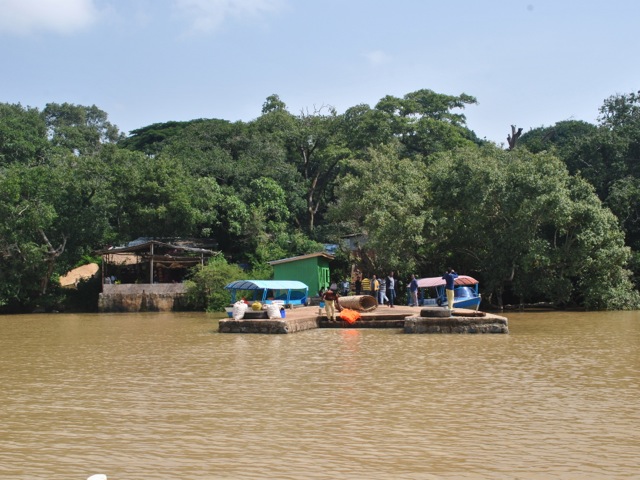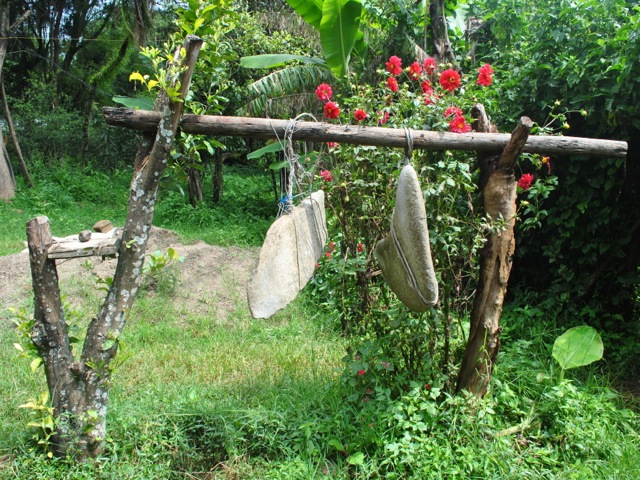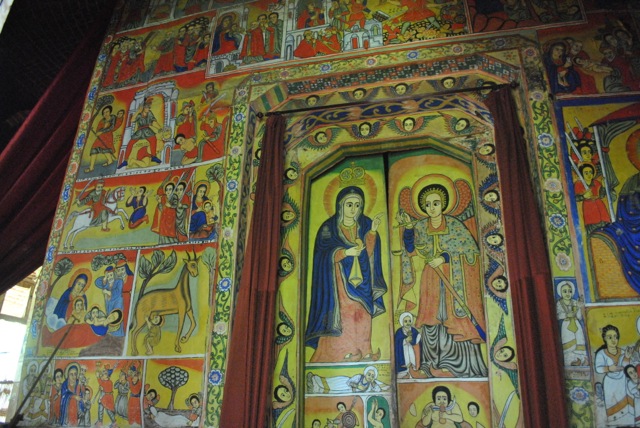Lake Tana is the largest lake in Ethiopia and the source of Blue Nile. The city of Bahir Dar on the shore of lake Tana is a nice base to explore the lake with its wild life, islands with monasteries and to visit Blue Nile falls.
There are about 20 monasteries scattered around the southern shore of the Lake Tana and the islands on the lake. The Ark of Covenant was kept for 800 years at Tana Chirkos on one of the islands after is was brought from Jerusalem and before it was taken to Axum, at least according to the theory explored in Sign and the Seal by Graham Hancock.
A couple of churches are a short boat trip away from Bahir Dar but many are on further away islands. We visited Ura Kidane Mihret where women are allowed. We tried to go to a further away island (Tana Chirkos being the objective) but were told that it was too far, would take a full day and could be somewhat risky considering the state of the boats and the likelihood of storms as we were visiting at a tail end of the rainy season. Besides women are not allowed in those monasteries as we understood.
Ura Kidane Mihret is located on a Zege Peninsula. We reached by boat from our hotel in Bahir Dar. It took about 40 minutes. The boats taking tourists around the lake are comfortable small flat bottomed ones, with a roof, cushions and life vests. Engines are not exactly the fastest – but enough to reach the nearby monasteries and to explore the marshes with hippos and birds.
Once out of the boat, we walked on a nicely maintained path through a beautiful thick forest with wild coffee trees. Zege peninsula supports what is reportedly the largest tract of natural forest left around lake Tana. In Ethiopia most forests have been cut out over the years to make way for agriculture and only about 5% of the territory is covered in forests compared to 45% a hundred years ago. The pockets of forests that remain more often than not would have a church or a monastery in the middle -preserving the forest as a symbol of heaven on Earth and home for God’s creatures.
Ura Kidane Mihret was founded in the 14th century and is reportedly one of the most beautifully decorated churches around Tana lake. The round church was built first in 16th century and then renovated multiple times. The outside walls and outer gallery of this round church are not decorated. But the square holly of holies is richly decorated with some beautifully restored paintings.
The inner sanctuaries of Ethiopian churches contain the copy of talbot – the Tablets on which Ten Commandments are inscribed. The original is in the Ark of the Covenant. Ethiopians believe that the Ark of the Covenant was brought to Ethiopia by Menelik, son of King Solomon and Queen Sheeba and that the Ark of the Covenant is now in St Mary of Zion Church in Axum. Only priests are allowed in the holly of holies. But talbots are taken out for procession and ceremonies such as during Timket in January.
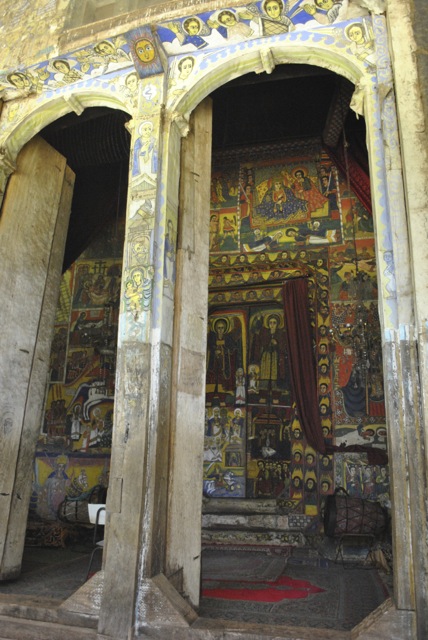
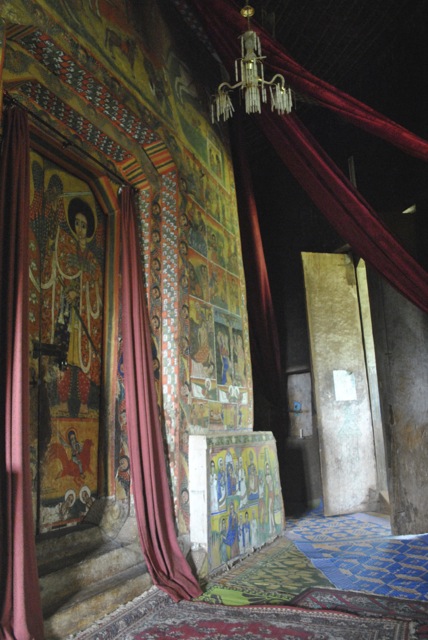
The elaborate paintings decorate the walls of holly of hollies. The guide provides a very good explanation on the meaning of the drawings. After visiting a few other churches there seemed to be a standard set that one can find in most Ethiopian churches. The paintings mostly depict the life of Christ and various conquests of Ethiopian kings defeating the enemies in all medieval glory.
In addition to the church there is also a small museum in the compound that has religious books, imperial dress and crowns for kings and emperors since 17th century.
After visiting the monastery we then took the boat to looks at the hippos and birds towards the source of Blue Nile.



